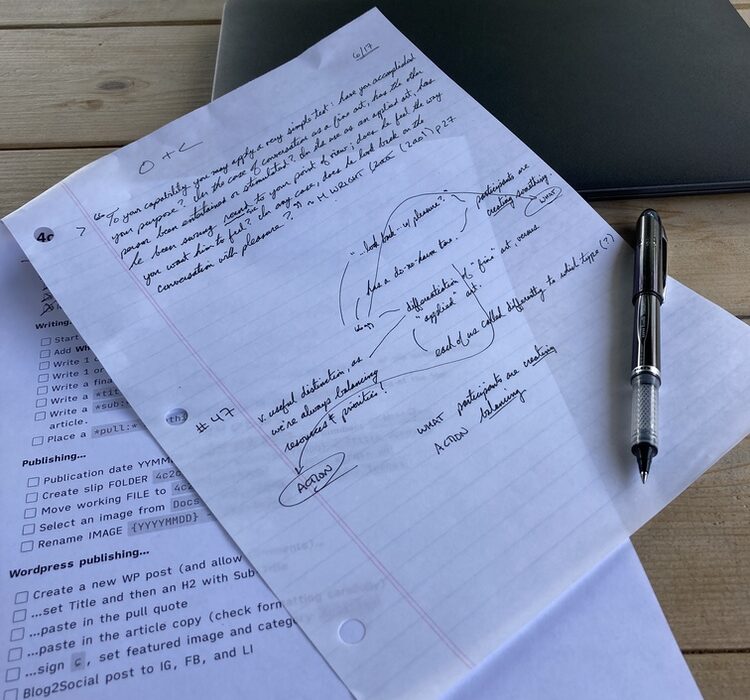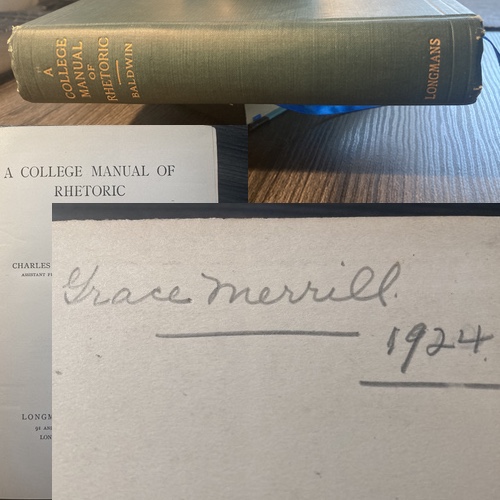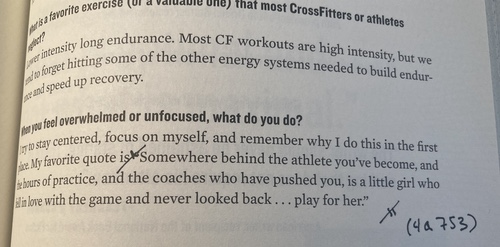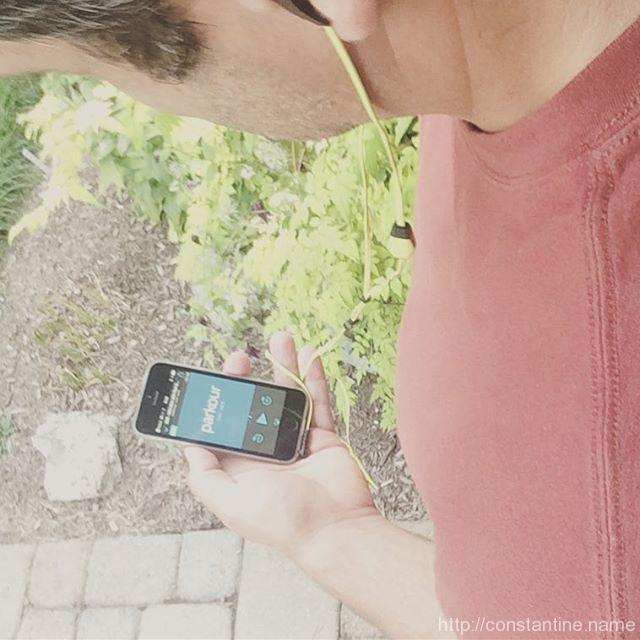I juggle many things (recent days have been a lot of dirt moving related to garden beds). But I love sitting with a pen and paper. Working on an issue for Open + Curious.
ɕ

I juggle many things (recent days have been a lot of dirt moving related to garden beds). But I love sitting with a pen and paper. Working on an issue for Open + Curious.
ɕ
What are you working on? When will you change your mind? What can you learn, what can you challenge?
~ Seth Godin, from What are you thinking about? | Seth’s Blog
slip:4usewa1.
As is often the case, Godin asks really good rhetorical questions. Me? In recent weeks I’ve been challenging myself to shift my focus to longer timeframes. I’ve reached a level of sophistication where—give or take—what I do on any given day does not matter; I don’t go off the rails. What I do, is get anxious about “all the things” when I get lost thinking about too many things.
Instead of hyper-focusing on the right-now, I need to zoom out. What I just accomplished moves me towards a goal. Yes, even if I just blew off some scheduled thing to go play outside; That moves my health forward energizing me for another day. And each day making some progress is just exactly the right thing to be doing.
ɕ
The idea of a changeable-bits, screw driver is brilliant. There were dozens of different screw-driving tools that varied only in the shape of their pointy end; their handles and other properties were identical. This was the perfect opportunity to create one tool to perform many functions.
You might wonder whether life is really simpler this way. Wouldn’t it be far more convenient to use a single device to accomplish all of these tasks?
Technically, yes. Psychologically, no.
While there’s an undeniable ease-of-use factor to housing a phone, internet browser, entertainment center, camera, and GPS in a lightweight rectangle that fits inside my pocket, the proximity of each of these tasks to one another leads, inevitably, to constant distraction. If you’ve ever tried to find the perfect angle for a photo while your Instagram post is blowing up, or answer a work email while your mom is calling you, you know what I mean.
~ Talia Barnes from, The Case For Digital Minimalism – by Talia Barnes
slip:4upepe1.
I agree with Barnes, and her point about proximity is one I’d not seen clearly expressed. And there’s a more obvious argument for digital minimalism: It actually works.
The multi-bit screw driver works exactly as well as the dozens of tools it replaces. But my “smart” phone is a less capable phone, a less capable camera, a less capable correspondence tool, etc. Yes, clearly, it’s more convenient. But “the best camera is the one you have with you” is only true if your definition of “best” is: I captured the photo. “The jack of all trades is master of none.” holds true. If instead your definition of “best” is: I did the thing well. Well, then, you need the right tool. And the right tools—the right technology, is calm technology.
ɕ
A precondition of becoming knowledgeable may be a resignation to, and accommodation with, the extent of one’s ignorance, an accommodation which requires a sense that this ignorance need not be permanent, or indeed need not be taken personally, as a reflection of one’s inherent capacities.
~ Alain De Botton
slip:4a977.
I hear a rumbling sound coming from my slipbox. It’s a rumbling sound like that of a distant summer thunderstorm, after dark. It’s the sound of a giant, grumbling in the next valley over. It works fine. I’ve simply had an idea for something that I can only do, if the slipbox were digital. I’m tinkering with some tools to see how exactly I want to set things up if I switch to digital. Interesting times!
ɕ
Last weekend, while helping friends pack-house, I found this book:

Wait! Don’t do the math on a book from 1907, and a college student taking Rhetoric in 1924. :)
Instead of packing it, I borrowed the book wondering if this James Sears Baldwin might just be the Baldwin. This is a dry book. But it’s also teaching me a ton about writing. The author hasn’t cracked even the slightest smile in the first 37 pages of this 400+ page tome. But the Baldwin quote I’d love to find within, might just be the sort of pithy thing this author would drop near the end.
Yes, I am willing to read a 400+ page tome on the off chance that I find the quote and get the once-in-a-lifetime thrill of finding an original attribution for a well-known quote. I digress.
By page 30, I had seen a whole bunch these little diagonal marks, but hadn’t really figured out what she was trying to imply.

Then it hit me. Quotes! It’s a diagonal line with a quote on the diagonal line. She’s delineating quotations. I’m guessing that she must have written a paper—who’d expect that in a Rhetoric class, right?—and I bet she came back through and marked the quotation sections. At the same instant that I figured it out, my up-to-then habit of drawing a full line across the page, (often a long line, then up or down a line, and then finish going across, to “cut” in the middle of a line,) seemed dumb.
Thank you Miss Merrill. This looks just way cooler:

ɕ
Here’s my uneducated hypothesis: the childhood politics of trying can leave adults with the habit of sometimes engaging in tasks without a real intention to complete them.
~ David Cain from, Don’t Try, Intend
slip:4urado2.
My attention has been drawn to “intention.” I’ve now read and heard, from several sources I consider fonts of great information, that intention is the key to having your efforts yield what you actually want. I’ve started trying to figure out what actually is my intention in conversations, blog posts (meta!) emails, coaching, etc.. I’m definitely onboard the intention bandwagon.
There’s a fine hair to split—in my opinion—regarding what exactly does setting, (and then remembering and staying true to,) one’s intention accomplish? Let that sink in for a second. When we talk about intention, we’re talking about something I decide in my mind before I take action. What exactly is that historical decision supposed to do? I don’t think it creates motivation, nor does it sustain motivation I get from somewhere else.
I think it is simply a compass. Once I’m neck-deep in the swamp of doing the thing and the alligators are sliding from the banks into the glassy water… it gets hard to remember why I was draining the swamp. (Feel free to craft your own metaphor if you don’t like my alligator-laden negativi-tea.) A glance at my compass— A glance at my intention instantly reminds me: Alligators be damned, I was intending to … and by George I shall so endeavor!
ɕ
How can a coach ensure their students surpass their own skills and preserve the essence of parkour over generations?
Andy Pearson unpacks why he considers himself a failed coach, and dives into what he believes his job as a coach to be. He shares his insights on where to look for coaching and training inspiration outside of parkour, before going through the litany of injuries he’s had, and explaining how they have shaped his training. Andy discusses his current training and how he expects it to grow and evolve, before wrapping up with his thoughts on FIG and the Olympics.
There are a lot of kids out there that are much, much better than I am […] I was thinking about this metric: Out of all of my students, can I actually think of anybody that has gone on and I’ve actually made them better than I am? I’m not talking about them. I’m talking about my ability as a coach, and therefore am I failing? Am I failing because therefore there’s going to be this dilution. Because if they then go on to be coaches and they do the same thing to their students and so on and so forth, are we going to be gradually losing what it means? …what parkour is about?
~ Andy Pearson (6:00)
The conversation explores Andy’s reflections on his coaching career, questioning whether his methods genuinely allow students to surpass his own abilities. Andy grapples with the idea that shielding students from the mistakes he made may unintentionally dilute essential learning experiences. He discusses how past injuries and his evolving perspective on training are reshaping his coaching philosophy.
Andy highlights the value of exploring strength and conditioning disciplines outside of parkour to enhance his coaching. He references strength coaches like Mark Rippetoe and training systems like StrongFit as critical resources. The discussion also touches on the contrast between structured coaching environments and the organic, unstructured paths taken by top parkour athletes, raising questions about the future direction of parkour training.
Takeaways
Training outside parkour — Exploring strongman training, Olympic lifting, and powerlifting provides valuable insights for improving parkour coaching.
Student progression — A key measure of a coach’s success is the number of students who surpass their abilities.
Injuries and resilience — Past injuries inform coaching methods, shaping approaches to protect students without limiting their growth.
Organic learning — Some of the best parkour practitioners develop without formal coaching, raising questions about the effectiveness of structured classes.
Strength programming — Applying principles of strength programming to parkour can help athletes break through plateaus and build resilience.
Resources
Starting Strength — Mark Rippetoe’s comprehensive guide to strength training fundamentals.
Practical Programming for Strength Training — Mark Rippetoe’s’ follow-up to Starting Strength, this book dives deeper into programming and periodization for strength progression.
Jim Wendler’s 5/3/1 Program — A simple and effective strength training program designed for long-term progress, emphasizing core lifts and incremental gains.
Precision Nutrition — A leading educational platform for nutrition coaching and certification, providing in-depth resources on diet, health, and athletic performance.
Barbell Shrugged Podcast — A podcast and video series that explores fitness, strength training, CrossFit, and the business of health and wellness.
Pavel Tsatsouline Resources — Pavel is known for popularizing kettlebell training in the U.S. and offers resources on strength training and conditioning, particularly for military and special forces applications.
(Written with help from Chat-GPT.)
ɕ
I’ve come to realize that I love being wrong.
I spent so many years reinforcing the thought that I could be the guy; The guy who swoops in and solves the problem when things get technically complicated, the guy who swoops in and creates order and process out of the chaos, the guy who swoops in and gets things done. Setting aside the analysis of whether or not I was actually particularly good at that, I did “I can be that guy” so much that I had convinced myself that I am that guy.
In The Coaching Habit, Michael Bungay Stanier talks about the Karpman drama triangle. I’ve certainly played all three roles of Persecutor, Victim and Rescuer. But I realize now that I’m addicted—or perhaps I can be hopeful enough to say was addicted?—to being the Rescuer. In the past year or so it’s become clear to me that it’s vastly more healthy and fun(!) to be part of a team that solves problems and gets things done.
To be the person who asks a question that opens a flood gate of discussion.
To be the person who understands that one’s purpose was to have been instrumental in creating the environment last week, so this week the team solves the problem on its own.
To be the person who is a complete and utter success, by having simply contributed a small addition here, a minor adjustment there.
ɕ

After some crazy-level effort this weekend it’s time for a walk! Exercising my brain though with this great podcast I found… http://constantine.name/100days
update: Wait, what podcast? …the “Parkour, They Said” Movers Mindset podcast!
ɕ

nonono the diner is called “Fatboys”
ɕ

ɕ
The rubbish and recycling bins, from the company Renew, were set up to identify and remember people’s smartphones, and thereby the movements and habits of their owners, as they walked by – kind of like how web pages monitor site traffic.
~ Lisa Vass
You are aware that you are all carrying personal, individually identifiable, tracking devices, right?
ɕ

“Oh h*ll no!” …in the rain!!
ɕ